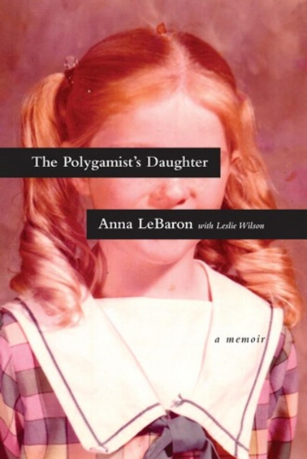
"THE POLYGAMIST'S DAUGHTER: A Memoir," by Anna LeBaron and Leslie Wilson, Tyndale, $15.99, 320 pages (nf)
Anna LeBaron begins her memoir in tears.
Her mother is heading out of town, and 7-year-old Anna is anxious at the separation. Within a few paragraphs, readers realize the gravity of Anna’s sadness: Anna’s father is the polygamist Ervil LeBaron, and Anna’s mother is one of his 13 wives running from the law.
The next day, Anna, one of over 50 children Ervil LeBaron fathered in his cult, is shipped to Mexico to live with other followers. She will not see her mother again for months.
LeBaron focuses her book on her sect experiences, and it reads quickly — stories of giant beetles in Mexico, FBI raids in Texas, multi-state transports in a poorly ventilated semi-trailer, hiding out for a month from the authorities in a beach-front house.
The strength of LeBaron’s work, however, comes as she presents memories that reflect the isolation of religious extremism. LeBaron illustrates the poverty, abuse, estrangement and fear she faced daily, and through these moments, LeBaron raises the shades that obfuscate the realities of polygamy.
In one story, dumpster diving at the local Safeway yields over-ripe produce and expired dairy products that makes LeBaron’s station wagon a car full of heroes when they return to their waiting family in the crowded economy apartment. In another memory, LeBaron recalls one leader’s slippery promise of a financial bonus from hard work at the sect-run used appliance stores. Hoping for school clothes that looked like everybody else’s, the children and sister-wives work 12-hour days throughout the summer only to discover the money siphoned to the pockets of those at the top of the polygamous hierarchy.
While LeBaron’s individual stories give her memoir motion, they take power from the overall narrative of LeBaron’s life.
It is often difficult to understand how time is progressing as LeBaron provides dates for the events she considers important but fails to share her age in the process. Although this does reflect the displacement LeBaron experienced, it is a distracting element for readers.
For example, LeBaron writes about her father hiding in a Mexican house where she was also living. This is the first time she has ever seen her father, and readers are uncertain of LeBaron’s age for this remarkable event. Additionally, LeBaron does not clarify her age when Ervil dies of a heart attack in his jail cell in August 1981. These are pivotal moments in both the stories of polygamy and of Anna LeBaron, and she lessens their impact by failing to help the reader know where and how to place them in her life.
Ultimately, the simplicity of LeBaron’s values reverberate in this book and give breath to her hopeless past. LeBaron’s story encourages a reader’s renewed appreciation for the everyday luxuries of friendship, truth, health care, education and even nutrition — things that are a presence in LeBaron’s life today as a monogamous wife and mother living outside the cult.
"A Polygamist's Daughter" is mature in theme only. Violence is referenced but not detailed.
Source: http://www.deseretnews.com/article/865678136/Book-review-A-polygamists-daughter-finds-hope-faith-in-life-outside-cult.html





